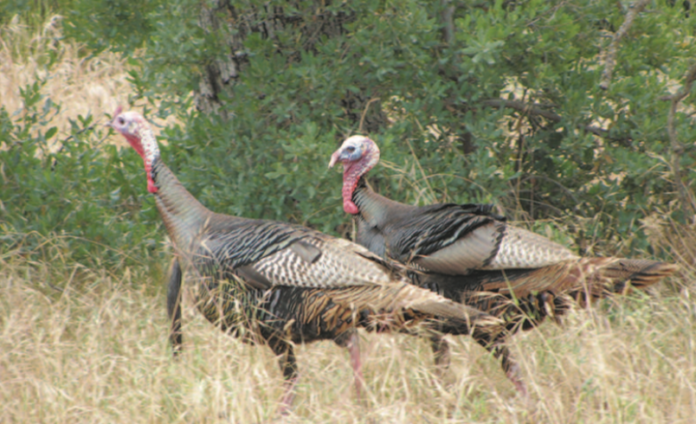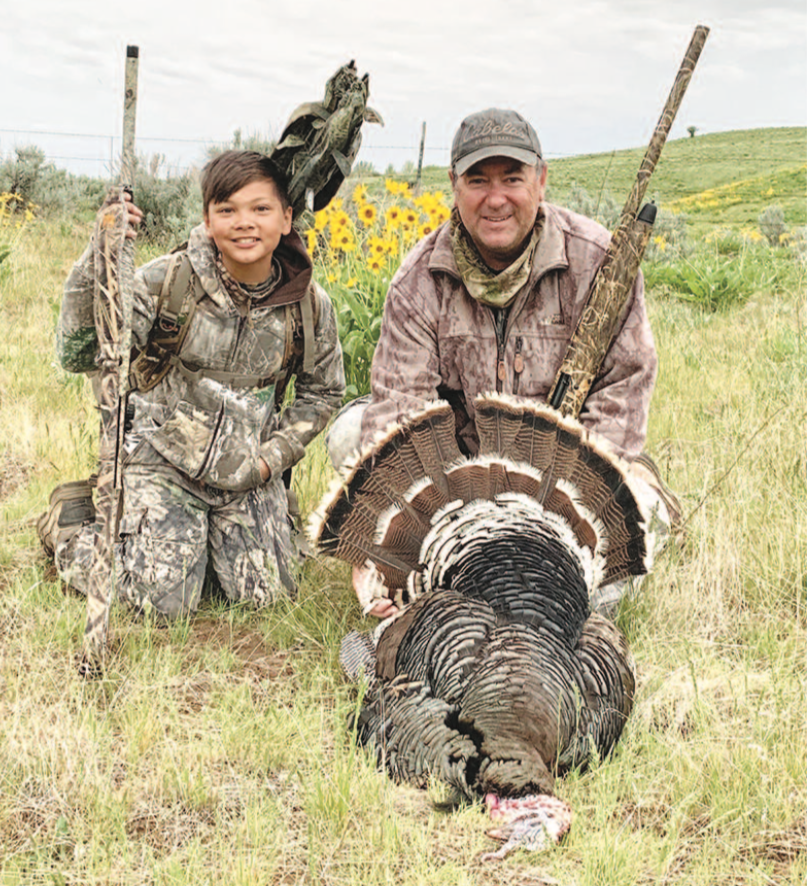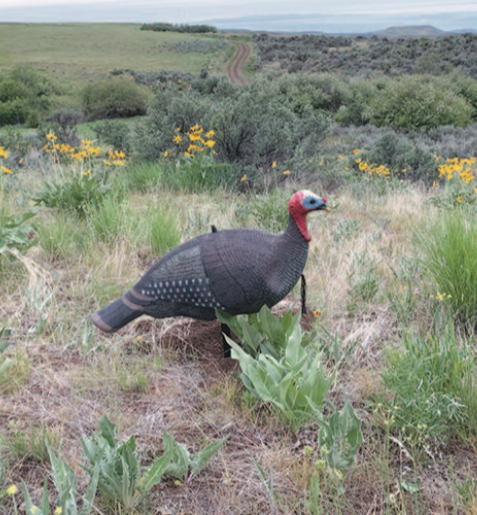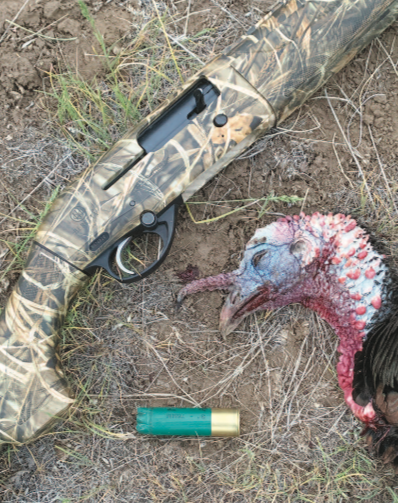
BY TIM E. HOVEY
As the weather warms and the days get longer, the wild world turns its attention to the breeding season. In a cycle older than man, springtime signals the replenishing of wildlife through reproduction, and many game animals have specific rituals all intended to attract the opposite sex. No group of animals is more display-oriented and aggressive as birds.
If you pay close attention to the differences between the sexes when it comes to most species of birds, you’ll see the male of the species is almost always more colorful, more heavily plumaged and always more aggressive. Peacocks, pheasants, drake mallards and especially turkeys are all much more colorful than their female counterparts, and their singular job during this time of year is to put on a show. And no animal puts on more of a show than the tom turkey during the spring.
Spring turkey hunters can use the tom’s blind obsession with reproduction to their advantage. During the spring, toms will pursue the attentions of hens and are aggressive when they do it. If hunters are sure turkeys are in the area, the easiest way to get the attention of a lovesick tom is to place a hen decoy a short distance from your hunting lair in the shadows. Add in a few subtle hen clucks to the setup and any toms in the vicinity should come in to investigate.
This decoy setup is basic and effective. Along with the seductive hen clucks, the tom will spot the decoy and usually come in at a run. If more than one tom spots the setup, you’ll be surprised how fast a 20-pound bird can move.
Once interested toms get close to the fake female, they’ll start their posturing. If you’ve never seen this, it’s quite a sight. Male birds will puff out their feathers, spread their tail fan and start strutting to catch the attention of the female. Strut- ting toms will bump and push each other around, at times fighting aggressively.
In my opinion, hunting spring turkeys requires very little calling. In fact, last year, I killed a respectable tom without making a sound. If you’re set up in a good area, during the right time of year, the only sounds you’ll need to make is the occasional soft clucks to pull the males close.
If you’ve done some pre-season scouting, and have identified a roosting tree, getting close in the pre-dawn hours is crucial. The goal here is to set up close by so when birds fly off the roost, they come in to investigate. Ideally, you want to sneak in close enough so roosted birds can see your setup before they fly down. In these scenarios, I find it’s ideal to make a slight adjustment to the decoy setup.
Almost 15 years ago, I was on a spring turkey hunt where I set out one hen decoy and did some slight calling from the shade of an oak tree. During that hunt, I realized that I had missed the opportunity to add a little extra eye appeal to my decoy setup.

After several hours of calling and countless tom turkey encounters, I finally killed a nice tom, but the big prize was ob- serving some male turkey behavior that changed the way I hunt turkeys.
During that hunt, I called frequently and got the attention of several groups of toms. However, once they caught sight of the hen decoy, they would check up out of shotgun range and fight each other and never get close enough for a shot. That’s when I knew I was missing a decoy.
If I had eased up a bit on the calling and placed a jake decoy close to the hen, the toms would’ve closed the distance to deal with the immature male trying to mate with the plastic hen. And I know for a fact he would’ve been met with severe aggression.
Years ago, I was checking out some turkeys on a friend’s ranch. I saw two hens, almost completely ignoring three toms that were strutting close by for all they were worth. At the edge of the group was a jake that had no idea he was in trouble.
Without warning, the three toms turned their aggressions towards the jake and spent a solid 10 minutes beating him until he stopped moving. The group finally disengaged and followed the hens that had left the area. I was convinced that the jake was dead, until he got up and looked like he had literally been through the ringer. Through binoculars I could see that one of his eyes was gone and blood dripped from his chest. He limped off and disappeared into the drainage.
Since that early hunt, I have always included a jake decoy near a plastic hen to complete my setup and have greatly reduced the amount of calling I do.

I mentioned that I had decoyed and killed a nice tom last year without making a sound. This is how it happened.
We had identified a roosting tree and under the cover of the early morning darkness, I snuck in as close I could, and set my hen and jake in a small clearing within eyesight of the roost tree. As the sun came up, I identified close to 20 birds in the leafless tree. Shortly after sunrise, every single bird flew down to investigate, and before they could sort things out, I killed a nice tom without calling once.
In my opinion, spring turkey hunting can be exciting. Spend some time in the field before the season and look for groups of birds, prints and scat. A heavy load of droppings in and around a tree, indicates that birds roost there occasionally. Try and identify a good spot to hide close by and plan on being there when the sun comes up on opening day. While much of their behavior this time of year is predictable, always expect the unexpected when dealing with angry toms.




